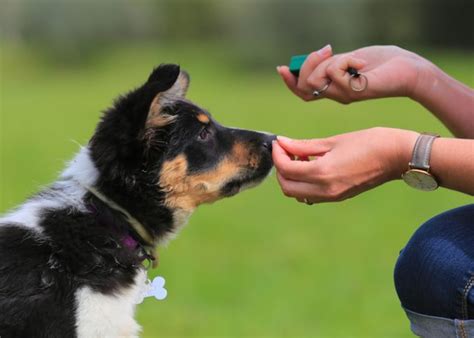Discover the benefits of reward-based dog training, the importance of positive reinforcement, and how to choose and use treats effectively for shaping behavior. Avoid common pitfalls and transition to other rewards.
Understanding Reward-Based Training
Reward-based training is a method of teaching and shaping a dog’s behavior using positive reinforcement. This means that instead of punishing or scolding the dog for undesirable behavior, the focus is on rewarding the dog for the behaviors that we want to see. The underlying principle is that the dog will be more likely to repeat the behaviors that lead to positive outcomes, which in turn makes training more effective and enjoyable for both the dog and the trainer.
In reward-based training, dog training treats play a crucial role in reinforcing desired behaviors. These treats act as an immediate reward for the dog, providing positive reinforcement for following commands or exhibiting good behavior. When used effectively, treats can help the dog to learn new commands and behaviors more quickly, as they are motivated by the prospect of receiving a tasty treat.
It is important to note that reward-based training is not just about giving treats indiscriminately. It is about using treats strategically to reward specific behaviors and to communicate to the dog what is expected of them. By understanding the principles of reward-based training and the role of treats within this framework, dog owners can effectively train their pets in a positive and humane way.
Importance of Positive Reinforcement
Importance of Positive Reinforcement
Positive reinforcement is a crucial aspect of dog training, as it focuses on rewarding desired behaviors to encourage their repetition. This method of training involves using rewards such as treats, praise, or toys to reinforce good behavior, making it more likely that the behavior will be repeated in the future.
Using positive reinforcement creates a strong bond between the dog and the trainer and helps to build trust and respect. Dogs respond well to positive reinforcement because it rewards them for their good behavior, making the training experience more enjoyable for both the dog and the trainer.
Additionally, positive reinforcement training has been proven to be an effective and humane way to teach new behaviors and modify existing ones, as it focuses on encouraging the dog to make the right choices rather than punishing them for making mistakes.
Purpose of Dog Training Treats
One of the key purposes of dog training treats is to provide positive reinforcement for desired behavior during training sessions. These treats act as a motivation for dogs to learn and perform specific commands or tricks, as they serve as an immediate reward for their actions. The use of treats can help to make the training process more enjoyable and engaging for the dog, encouraging them to pay attention and participate willingly.
Additionally, dog training treats can be used to establish a strong association between a specific action or behavior and the reward, making it easier for the dog to understand and remember what is expected of them. This association helps to reinforce the desired behavior, increasing the likelihood of the dog repeating it in the future. It also allows for more efficient and effective training, as the dog quickly learns to correlate their actions with the positive outcome of receiving a tasty treat.
Furthermore, the use of treats during training can help to build a positive relationship between the dog and their owner or trainer. By offering delicious and rewarding treats, the dog learns to trust and respect the person providing the treats, strengthening the bond between them. This can create a positive training environment and enhance the overall training experience, leading to better communication and cooperation between the dog and their handler.
Choosing the Right Treats for Training
When it comes to training your dog, the type of treats you use can have a big impact on the success of your training sessions. The right treats can motivate your dog and reinforce good behavior, while the wrong treats can lead to disinterest and frustration.
When choosing treats for training, it’s important to consider your dog’s preferences and dietary needs. Some dogs may be more motivated by meat-based treats, while others may prefer vegetarian options. Additionally, it’s important to consider any allergies or dietary restrictions your dog may have, and choose treats that are safe and appropriate for their needs.
Another factor to consider when choosing treats for training is the size and texture of the treats. Treats that are too large or difficult to chew may slow down training sessions and distract your dog, while treats that are too small may be difficult for your dog to detect and may not be as effective as rewards. Opt for small, soft treats that your dog can easily consume and enjoy during training.
Using Treats to Shape Behavior
When it comes to training your dog, treats can be a valuable tool in shaping their behavior. The use of treats as a form of positive reinforcement can help to encourage your dog to exhibit desired behaviors. By offering a tasty reward when they perform the desired action, you can effectively shape their behavior over time.
It’s important to note that treats should be used strategically and in moderation. Overusing treats can lead to dependency and may hinder the development of the desired behaviors. Instead, treats should be used as a motivational tool to teach new behaviors and to reinforce existing ones.
As your dog becomes more accustomed to responding to treats, you can start to transition to using verbal or physical rewards in place of treats. This gradual shift helps to ensure that your dog’s behavior is not solely dependent on receiving treats, but rather on a more generalized sense of positive reinforcement.
Avoiding Overuse of Treats
The Role of Dog Training Treats in Reward-Based Training
When it comes to using dog training treats in reward-based training, it’s important to be mindful of how often you are using them. While treats can be an effective tool for motivating and rewarding your dog, overuse can lead to dependency on the treats and can make it challenging to wean your dog off of them. Therefore, it’s essential to strike a balance and avoid relying too heavily on treats in training.
One way to prevent the overuse of treats is to gradually reduce the frequency of treat rewards as your dog becomes more proficient in the trained behavior. For example, you can start by giving a treat every time your dog performs the desired behavior, and then slowly transition to intermittent treat rewards. This way, your dog learns to perform the behavior without expecting a treat every time, and you can eventually phase out the treats altogether.
Another way to avoid overuse of treats is to incorporate other forms of rewards into your training regimen, such as verbal praise, petting, or playtime. This helps your dog understand that good behavior will be met with a variety of positive reinforcements, not just food rewards. By diversifying the rewards, you can reduce the reliance on treats and create a more well-rounded training experience for your dog.
Transitioning to Verbal or Physical Rewards
When it comes to training our furry friends, most of us start off using treats as a way to reinforce good behavior. This is commonly referred to as reward-based training, where the dog receives a treat for performing a desired action. However, as the training progresses, it’s important to transition from solely using treats to incorporating verbal or physical rewards as well.
It’s essential to understand that treats should not be the only form of reward in a dog training program. While treats are effective in the initial stages of teaching a new behavior, it’s crucial to gradually shift towards using verbal praise or physical affection as rewards. This not only helps in preventing over-reliance on treats, but also strengthens the bond between the dog and the owner.
Transitioning to verbal or physical rewards requires patience and consistency. It’s about gradually reducing the frequency of treat rewards while increasing the use of verbal praise and physical affection. This process can take time, but with dedication and positive reinforcement, dogs can effectively learn to respond to verbal cues and physical rewards as well.
Frequently Asked Questions
What are dog training treats?
Dog training treats are small, bite-sized snacks used to reward and motivate dogs during training sessions.
Why are dog training treats important in reward-based training?
Dog training treats serve as a positive reinforcement for desired behaviors, making the training process more effective and enjoyable for the dog.
What are some common types of dog training treats?
Common types of dog training treats include small pieces of cooked meat, cheese, commercial dog treats, and homemade treats made from ingredients like peanut butter and pumpkin.
How often should dog training treats be used during training?
Dog training treats should be used intermittently and gradually phased out as the dog becomes more consistent with the desired behaviors.
Are there any considerations when using dog training treats?
It’s important to consider the nutritional value and calorie content of the treats to prevent overfeeding and maintain a balanced diet for the dog.
Can any dog be trained with treats?
While many dogs respond well to training with treats, individual preferences and sensitivities may vary. Some dogs may be motivated by other rewards such as toys or praise.
What are some tips for using dog training treats effectively?
Some tips for using dog training treats effectively include using high-value treats, timing the rewards appropriately, and keeping training sessions fun and engaging for the dog.





